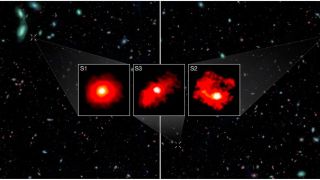Too often I get caught up in the moment-to-moment action, news, and life drama and need to take a step back. That’s when I draw on two college courses that keep me grounded when life overwhelms me.
I applied to my college long ago in part because it had dinosaur tracks near campus and because the school had its own observatory and telescope. As an eager undergraduate, I took courses in geology and astronomy—thinking I had the chops to major in one of those disciplines. Nope. But the takeaway from those two classes has stayed with me more than many other courses and came back in force when I ran across two recent articles. Both of them gave me the perspective that I need these days. And that perspective comes from looking into the earth and into the sky, over eons of time.

Science magazine recently published a small 105-word summary piece about a little dinosaur’s footprints found in South Korea. The Dromaeosauriformipes rarus, about the size of a sparrow, left its tracks near an ancient lake. The tracks were spread out in a way that suggested the dinosaur must have been sprinting and flapping its wings before takeoff. Two things struck me. First, the scientist-detectives figured out that the dinosaur was about to take flight. But, second, the scientists estimated that the tracks are 160 million years old. 160 million years. Let that sink in.
Next, I ran across an article about the James Webb telescope’s recent discovery of three fast-forming galaxies, called the Red Monsters. The three galaxies emerged within the first billion years after the universe started, which was about 13.8 billion years ago. Most other galaxies took several billion years to form, while these raced into being in record time. Those three galaxies (with thousands of stars) shaped up 12 billion years ago. While there is some question about what’s going on in those galaxies, scientists are intrigued by the speed of formation.
I’m stretching here, obviously, but when I read articles like these, it puts life in perspective for me, at least for a while. Humans, in this time and place, are not even as big as specks. We’re such quick whiffs of place and time that in the long haul, what happens doesn’t matter, really. Nature and the universe will carry on, no matter what we do.
I take a breath, think of that sparrow-like dino and I can go back into the fray.

